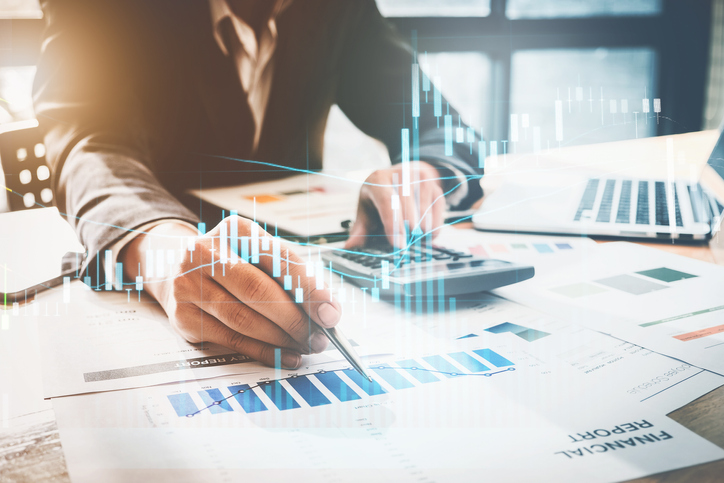Research and Development is the key driver of innovation in tech. The bigger a tech company gets, the more investment in R&D matters for improving their products and services. Industry leaders like Amazon, Alphabet, Meta, and AliBaba have poured billions into developing new products over the last few years. Below, we'll discuss how you too can capitalize R&D within your organization.
While new technologies, tools, and software solutions require huge investments, they may not always pan out. Typically, it’s hard to tell if products in development will become assets that generate revenue or failures that cost the company time and money. For this reason, businesses are often obliged to list R&D spending as expenses until they’re proven to be viable assets.
Why you should capitalize R&D
R&D capitalization allows those projects that have a high probability of seeing production and generating revenue, to be converted from expenses to assets. This allows businesses to report their actual potential for returning profits, rather than earnings that might be skewed by R&D spending cycles.
If you don’t capitalize R&D expenditure, you’re likely to see volatility in your earnings depending on R&D-related spending throughout the fiscal year. This volatility can be detrimental to gaining investment support. For many, capitalizing the costs of R&D can provide a clearer view of their business value.
What you need to know
When you capitalize R&D expenses, the associated costs are amortized over the foreseeable future, allowing you to reflect more accurate assets. The downside of this is your taxable capital increases, meaning you end up paying more.
Converting R&D expenses to assets depends on several factors, the most important being what financial reporting standards are being used. Additionally, the taxable percentage of your capitalized R&D spending depends on the tax regulations in your area. Fortunately, some governments offer special incentives like tax credits for capitalized R&D assets.
To navigate these complexities, it’s best to talk with your financial or legal advisors before beginning plans to capitalize any expenses.
How reporting standards can affect Capitalization
Most financial reporting guidelines like the U.S. Generally Accepted Accounting Principles (GAAP) or the International Financial Reporting Standards(IFRS), require R&D expenditure to be listed as expenses until they are confirmed as assets. However, both GAAP and IFRS make allowances for software R&D where certain costs can be capitalized.
Capitalizing R&D with GAAP
If your assets are subject to GAAP standards, it can be challenging to capitalize R&D. This is because GAAP requires R&D expenses to be reported in the year that they are spent. What this means for your profit and loss sheets, is that all your R&D expenses for the year must be reflected alongside your investments and earnings. Typically, companies reporting their financial performance in GAAP jurisdictions are obligated to list the costs of materials, facilities, and equipment used.
However, in some circumstances, certain R&D expenses can be treated as non-current assets, allowing them to be capitalized and expensed gradually over a set number of years. This is usually possible where costs are associated with R&D for a future asset. These costs can then be depreciated throughout that asset’s projected lifetime.
For software companies in the US, the GAAP (as defined by the Financial Accounting Standard Board) requires all R&D costs to be expensed until technological feasibility is established. According to the FASB;
…the technological feasibility of a computer software product is established when the enterprise has completed all planning, designing, coding, and testing activities that are necessary to establish that the product can be produced to meet its design specifications including functions, features, and technical performance requirements.
In short, once your software R&D has reached a stage of viability, subsequent costs for developing the product can be capitalized.
Proof of technological feasibility accepted by the FASB can be a detail program design or a product design plan and working model demonstrating viability. All costs up to this stage however must be expensed.
Capitalizing R&D with IFRS
For tech businesses operating where IFRS regulations are used, capitalizing R&D can be a bit more difficult. IFRS recognizes software as an intangible asset and allows for certain expenses incurred in R&D to be reported as asset costs.
The IFRS requires expenditures on intangible items to be recognized as expenses unless it meets the definition of an intangible asset. In the case of software products, this means that they must have the potential to generate future economic benefits (profit) and the cost of the product can be reliably measured.
This is where it can become complicated. Expenditures during the research phase of intangible assets are recognized as expenses. Development expenses meeting certain criteria, however, can be recognized as the cost of intangible assets.
In theory, this means more of your costs can be capitalized. In practice, however, it’s difficult to differentiate the cost of research from development. Even then, determining if those development expenditures qualify for capitalization can be challenging.
Like the GAAP guidelines, technological feasibility has a big part to play in justifying R&D capitalization. After separating your research and development costs, it’s necessary to demonstrate the following:
- The technological feasibility of the product.
- The intention to move that product into production for use or sale.
- How the product will generate economic benefit throughout its useful lifetime.
- The available resources and materials necessary to complete development of the product to be usable or sellable.
- The ability to accurately measure expenditure related to the development of the product.
Finally, your product’s asset costs can be amortized over its projected lifetime where it has a finite lifetime use. On the other hand, where the useful lifetime is indefinite, these costs can’t be amortized, and the product is subject to annual impairment testing.
Reporting for Better Investment
Ultimately, the goal of capitalizing R&D costs is improving how your business looks on paper. With your R&D costs amortized, your profit and loss sheets can better reflect your earnings––and your profitability. The valuation of your company’s earnings before interest, taxes, depreciation, and amortization is one of the best ways to show your potential to future investors.
Learn more about developing better private equity investor relationships in our article here. For more information on making the most of your tech spending and investments, click here.
About the author
Elena Leralta
Working as Foreworth’s Chief Financial Officer, Elena possesses a wealth of knowledge on business management and finance owing to her over 20 years of experience working in the financial sector.
More info →


What do you think? Leave us your comments here!